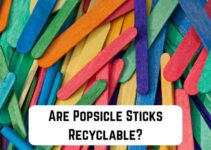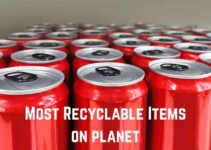Everybody uses kraft paper, also known as cardboard or paperboard. Students especially find it very useful for their academic activities. Kraft paper is elastic, durable, and resistant to tear, so it is used in different applications, from electrical insulation to product packaging to candy wrapping and wrapping paper.
Kraft paper has become the most popular choice for packaging. Bleached kraft paper is white and unbleached or natural kraft paper is brown. Of all packaging papers, kraft paper is the most durable and strongest. And it is used on occasions where maximum strength is required.
Interestingly, the word kraft means strength in German, so it is safe to say the word is derived from the German word because it captures the durability and strength of the paper. Kraft paper is also resistant to grease and oil, making it the perfect material for schools, home lunches, restaurants, and delis.
Many people have become environmentally conscious lately, and they are demanding transparency from manufacturing companies. They want to know the material used to produce items. They want to know if the products have any negative impact on the environment. We will look at the impact kraft paper has on the environment in this blog post. So, dive in!
Can You Recycle Kraft Paper?
Most kraft papers are produced through a process called the kraft process. Other processes of producing kraft paper include the mechanic pulping process and the acidic sulfite process. Of all three processes, kraft paper produced by the kraft process is the strongest. Regardless of the manufacturing process, can you recycle kraft paper?
Yes, you can recycle kraft paper. Kraft paper is manufactured from virgin wood pulp, making it organic. And kraft paper can be recycled up to seven times. So you can recycle recycled craft paper about seven times. This is possible because of the durable properties it possesses.
The process of recycling kraft paper is very similar to the recycling process of other paper items. The kraft papers are first collected and sorted, and this is to separate every impurities and toxin from the papers. After the papers have been sorted, they are taken to a mill, where the recycling process begins.
The recycling process includes pulping, cleaning, screening, deinking, dispersion, kneading, bleaching, water treatment, and waste handling. At the end of the recycling process, new paper items are produced.
Nevertheless, there are some challenges to recycling paper kraft, one is the risk of contamination, and the second is market prices. Most people are not conscious of the recycling process, and you can tell from the way they use and dispose of items.
Contaminants during the recycling process include oil, dirt, scrap steel, and food waste. Most of the contaminants require chemical processes to be eliminated.
The second challenge is market price. For kraft paper to have value, it must maintain its quality, durability, and other properties. However, the chemical processes required to eliminate contaminants during the recycling process reduce the paper’s fiber quality, so after recycling, it loses value.
We need to be cautious with the way we use kraft papers. Every item we own must be used cautiously. It will be ironic to try to protect our environment by recycling waste products and unwanted items while making the recycling process difficult.
Is Kraft Paper Biodegradable?
Kraft paper is the popular choice because it has excellent strength, is durable, and can withstand pressure. However, there is a concern, is this popular paper item biodegradable? Can it be broken down by microorganisms and bacteria when we dispose of it?
Of course, kraft paper is one hundred percent biodegradable. Kraft paper is manufactured from pulp, and it is made of long virgin maritime pine fibers, making it completely organic. Within a few weeks, kraft paper breaks down into cellulose fibers, exactly like tree leaves.
You should know that for a product to be considered biodegradable, the waste must not pollute the surrounding environment after it has been biodegraded. The process of biodegrading must be within a year. Kraft paper meets all these requirements; it does not pollute the environment before, during, and after the biodegrading process. Neither does the biodegrading process exceeds a year.
However, for the biodegrading process of kraft paper to be swift, certain factors must be present. There needs to be a balance of heat, moisture, oxygen, sunlight, and microorganisms. In the absence of at least one of these factors, it will take a while for kraft paper to biodegrade fully.
We mentioned earlier that there are two types of kraft paper, natural or unbleached kraft paper and bleached kraft paper. Natural kraft paper is the most popular kraft paper, and it is biodegradable. On the other hand, Bleached kraft paper is not biodegradable because of the chemical processes it has undergone.
You need to know that if a natural kraft paper has been contaminated, the biodegrading process will be slowed drastically. Suppose the kraft paper has come in contact with oil, grease, and other inorganic products. In that case, it will be difficult for it to biodegrade because the contaminants will repel the microorganisms and bacteria that would break it down.
Kraft paper biodegrades faster in industrial facilities because all the essential factors and conditions can be controlled, unlike when they are left to biodegrade naturally. The temperature is usually around 60°C in the industrial facility and around 35°c in our homes. Microorganisms multiply faster in high temperatures, so waste biodegrades faster.
Is Kraft Paper Compostable?
There is a similarity between biodegradable materials and compostable materials. They can both be broken down by microorganisms; however, as compostable materials decay, they become compost and fertilize the soil, unlike biodegradable materials that break down and decomposes.
Not every biodegradable material is compostable, but all compostable materials are biodegradable. Since kraft paper is biodegradable, is it also compostable? Let us find out.
Kraft paper is compostable. However, only the natural or unbleached kraft paper is compostable. They are considered brown materials, and this means they will add carbon to the soil after they are broken down. Kraft paper is safe to compost, and it also positively affects the compost pile by enriching it.
However, there are situations whereby kraft paper cannot be composted. You need to be aware of these situations because if you try to compost them, you could contaminate the whole compost pile. When the compost pile is contaminated, the surrounding environment becomes contaminated as well.
We mentioned earlier that kraft paper is not biodegradable if it has been contaminated. It is the same thing with composting. If the kraft paper has been soiled with oil, grease, ink, or any other contaminants, it will not compost when you put it in the compost pile.
If you notice that the kraft paper has a thin layer of plastic or metal, you should keep it off the compost pile. Any kraft paper that has a chemical coating of any sort must be kept out of the compost pile.
Before you compost kraft paper, it is advised that you shred it first. Some people dump the kraft paper whole into the compost pile, and it takes a longer time to compost than when you shred it. Shredding the kraft paper mixes it evenly with other compostable waste in a pile, thereby aiding its decomposition.
Before adding it to the compost pile, you need to clean the kraft paper of any contaminant, especially non-compostable wastes. This ensures nothing will delay or impede the decomposition, and the compost pile will remain healthy.
Is Kraft Paper Eco-Friendly?
Luckily many people are becoming very conscious of the environment than ever before and showing concern for the state of the environment. Kraft paper has become one of the most commonly used forms of paper. You see kraft paper in the store, at home, in schools, almost everywhere. And a question is arising, is kraft paper eco-friendly? Does it affect the environment?
The process of manufacturing kraft paper makes it eco-friendly. The process is much simpler, and there are few chemicals used in the process. This makes kraft paper completely eco-friendly and harmless to the environment. The chemicals used in manufacturing kraft paper can be recovered, reused, and recycled.
Pine and bamboo are the most common choice of wood for manufacturing kraft paper. These two kinds of wood are completely organic and require few chemicals during the process. So, when you dispose of kraft wood, it does not harm the environment; rather, it decomposes into compost and fertilizes the surrounding environment.
Kraft paper is a better alternative to plastic. Kraft paper bags do not cause any damage to the environment like plastic paper bags.
Is Kraft Paper And Butcher Paper the Same?
Butcher paper is a type of kraft paper, and it was originally used to wrap raw fish and meat from flavor contamination and airborne contaminants. But, it is now used for various purposes, especially in schools, for art and crafts, and to hang artworks.
Many people have wondered if there is any difference between kraft paper and butcher paper besides the color. Kraft paper is usually brown, and butcher paper is white. In reality, both papers come in different variety of colors. There are even custom colors.
Kraft paper and butcher paper are a bit similar, but there are more differences than similarities.
There are some differences between kraft paper and butcher paper. One of the differences in their uses. Kraft paper is used for packaging items, usually household items. It is used to package food items, as an art canvas and wrapping paper. On the other hand, butcher paper is used mostly to wrap food items, especially raw food.
Another difference between butcher paper and kraft paper is their manufacturing processes. Butcher paper is treated with some chemicals to make it withstand moisture better than kraft paper. This treatment is what makes it suitable for wrapping raw food items.
The chemicals used during the manufacturing process of butcher paper make it safe to wrap foods than kraft paper. On the other hand, Kraft paper can be used for different purposes, unlike butcher paper that is used for storing raw meat and fish.
Butcher paper is more expensive than kraft paper because of all the processes and materials needed during its manufacturing. Little to no chemicals are required to produce kraft paper, and the process is quite simple, so it is readily available at a low price.
Conclusion
Kraft paper is a very versatile form of paper. We find them useful for different purposes, and luckily, they are eco-friendly and have no negative impact on the environment. While we are using this item for different purposes, we also reduce our impact on the environment.
We all must endeavor to show concern for the state of our environment. It is where we live, and we cannot be careless with the way we manage it. For us to enjoy our lives on this planet, we must take proper care of it.
References:
https://artision.com/blogs/news/kraft-paper-packaging-ideas
http://www.oren-intl.com/blog/what-is-the-true-difference-between-kraft-paper-and-butcher-paper






